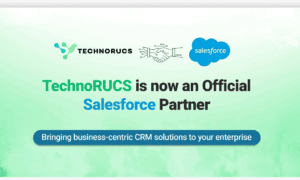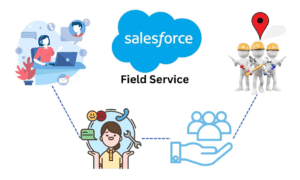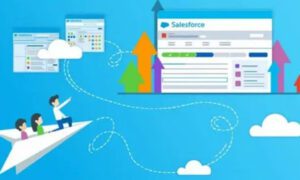Salesforce is a widely used CRM platform that helps companies bring their customer data into one system and organize internal workflows. Many departments, from sales and service to operations and finance, can use it to reduce duplication, track progress, and manage relationships across teams.
Salesforce includes several applications like Sales Cloud, Revenue Cloud, Service Cloud, Marketing Cloud, and Pardot. Each focuses on a different area of business operations. However, buying a license is just the beginning. To get value from the platform, it needs to reflect how your business works and what it requires to function well.
What Salesforce implementation involves
The process includes more than technical setup. It calls for a detailed understanding of what the business needs to accomplish, how processes currently work, and how to map those into the platform. This usually involves project managers, Salesforce consultants, and sometimes developers.
Some organizations complete this process with in-house teams. Others bring in outside partners with experience across different projects and sectors.
Two common approaches to getting started
1) Doing it in-house
Many companies consider handling setup internally, especially if they already have team members familiar with Salesforce. But experience using the platform day to day does not always translate into designing a setup that is stable and adaptable over time.
Challenges often include:
- Creating temporary setups that need to be reworked
- Overlooking steps such as integrations or data import
- Longer timelines due to knowledge gaps
- Missing methods that others have already tested in similar settings
These issues can lead to technical debt that slows future updates.
2) Working with an external team
Hiring a certified Salesforce partner gives you access to people who work with the platform regularly. These teams have handled similar needs in other businesses, which helps them recognize patterns and avoid mistakes. The arrangement typically includes a project manager, consultants, and developers who guide the process from planning to review.
Benefits of using a partner include:
- A broader team with roles split by area of focus
- Advice based on experience across many types of businesses
- Support with setup, design, and business process mapping
- Training materials and handover so your internal team can take ownership later
Phases of Salesforce setup
Whether working in-house or with a partner, the process generally follows a step-by-step sequence.
1) Identify stakeholders
Start by identifying who will participate in the project and how. Roles often include:
- End users from teams such as sales, service, or finance
- Super users who help others during rollout and testing
- A project manager to track tasks and communication
- A decision-maker who approves budgets, schedules, and adjustments
2) Set project goals
Bring participants together and gather input on what they need. Ask:
- Which tasks take up the most time
- What causes delays or missed steps
- What teams expect to gain from the new setup
- What works well in current tools that should be kept
These questions help shape the scope and clarify what should be built first.
3) Collect requirements
Requirements explain what the system should do. Write them in short, clear, and testable statements. Avoid combining multiple ideas, and use terms that are easy to understand across departments.
Start by letting teams list their needs individually or in groups. Then, meet to refine and approve the list. Make sure all entries follow the same standard.
4) Rank requirements by priority
Not every request can or should be completed at once. Sort each item as a must-have, should-have, or nice-to-have. Group related items together to simplify the build phase.
Once ranked, the technical team or partner can estimate the time and effort for each group. Use this to decide what to include in the first round and what to save for later.
5) Build phase
This step brings the requirements into the system. During this time, consider:
- How you will use test environments
- What documentation will be produced and shared
- What the plan looks like for deployment later
Even if you are not writing code yourself, it helps to ask questions and stay informed.
6) Review and gather feedback
After a section of the system is ready, test it. Ask the business team to walk through real tasks and share observations. Note what works and what needs revision.
If feedback matches earlier requirements, revise the build. If new requests come up, decide whether to add them now or document them for a second phase. Any additions should be reviewed for how they affect the overall setup.
7) Prepare for launch
Inform users of changes, share a schedule, and describe which systems will be replaced. Offer guidance on what tools will be used going forward.
Plan for training sessions:
- Admin sessions to prepare system managers
- User sessions for everyday use
- Train-the-trainer programs that let team leads support others
Record all sessions for reuse.
8) Launch day
Prepare the environment in advance. Validate packages, pause system messages if needed, and make sure teams avoid updating records during the handoff.
After launch, test all major functions. If anything is missing, resolve it quickly and inform users of updates.
Tips to keep in mind
- Write clear and specific requirements
- Involve users and managers early and often
- Make time for input and feedback during each step
- Test the system using real tasks before going live
When to consider a CRM
When business systems begin to feel disconnected or too dependent on manual work, it may be time to look for something more structured. A CRM can provide one place for teams to track their work and reduce friction across functions.
If you rely on spreadsheets or have trouble answering basic questions about customer activity, product performance, or sales outcomes, a platform like Salesforce may help you regain control.



































